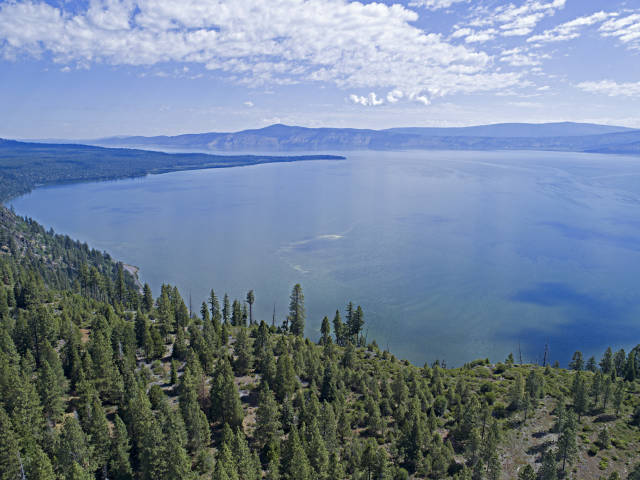Covering almost 2 million acres of land and with peaks ranging from 900-9,000 feet in elevation combined with 200 miles of roaring rivers, the Klamath National Forest is one of America’s most biologically diverse regions. Ponderosa Pines dominate the lower elevations before the Douglas fir, sub-alpine fir, and mixed conifer species collectively conquer steeper peaks. Wild horses and elk herds roam the trees while bears, deer, river otters, and minks reside on the banks. Coho salmon and steelhead populations swim the rivers while osprey and bald eagles soar the skies. Because of Klamath’s proximity to other mountain ranges, the Forest experiences unique climate patterns, resulting in more plant life diversity than anywhere else in California.
Since more than 30 species of conifers inhabit Klamath, the National Forest has been a historic hot spot for logging. Clear-cutting was common practice for the project area, resulting in high harvest levels and reduced carbon stock levels, defined as the amount of carbon contained in a system that can accumulate or release carbon. The carbon stock levels were significantly lower than the current Forest Industry and Analysis (FIA) common practice statistic.
Green Diamond Resource Company is the new owner of the project area (402,349 acres) and that of its sister project, the Klamath West IFM project (630,000). Green Diamond is changing tactics and relying on carbon finance to incentivize sustainable management techniques to restore carbon stocks over the 25-year crediting period. Green Diamond plans to apply practices, including thinning. Thinning plays a particularly important role because it:
- Reduces risk of catastrophic pest/disease outbreaks, and wildfire destruction.
- Boosts overall annual water yields, since more snow falls to the ground, increasing groundwater and increasing water yields later into the dry season.
- Strengthens river flows on a seasonal basis, which improves the conditions for not only the river ecosystem but also downstream communities’ water supplies.
Other than the plant and animal biodiversity, the Klamath National Forest’s rivers and watersheds supply California with much-needed water. 75% of the project area is within the Klamath River Watershed Basin and the 120 watersheds within the project area will be protected by forest regeneration. It is no surprise that the California Air Resources Board cited that the project demonstrates “direct environmental benefits in the state of California.”








